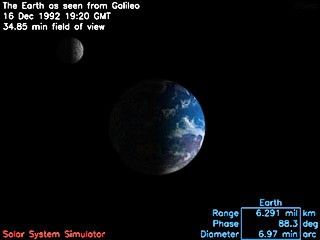
Recent discoveries have indicated that there are thousands of earth-like planets out there. The Keck observatory observe (Nov. 3, 2013) “What this means is, when you look up at the thousands of stars in the night sky, the nearest sun-like star with an Earth-size planet in its habitable zone is probably only 12 light years away and can be seen with the naked eye. That is amazing," said UC Berkeley graduate student Erik Petigura, who led the analysis of the Kepler and Keck Observatory data.”I[1]
That sounds like a real disproof of the fine tuning argument. Life bearing planets are so plentiful they orbit every fifth star. That’s not exactly true. The study says Earth “size” planet. That doesn’t necessarily translate into life-bearing: The team, which also included planet hunter Geoffrey Marcy, UC Berkeley professor of astronomy, cautioned that Earth-size planets in Earth-size orbits are not necessarily hospitable to life, even if they orbit in the habitable zone of a star where the temperature is not too hot and not too cold.
"Some may have thick atmospheres, making it so hot at the surface that DNA-like molecules would not survive. Others may have rocky surfaces that could harbor liquid water suitable for living organisms," Marcy said. "We don't know what range of planet types and their environments are suitable for life."[2]
[1] Keck Observatory representative, “odds are on oodles of Earths,” published by Jet Propulsion Libratory, California Insitute of Technology for NASA on “Earth Quest.” Wesbite. Nov 4, 2013.
http://planetquest.jpl.nasa.gov/news/139 accessed 11/8/ 2013.
[2] Ibid.
Astronomer Howard A Smith thinks Earth is not common
Astronomer Howard A Smith thinks Earth is not common
Donald Brownlee summarize the many constraints in their book “Rare Earth: Why Complex Life is Uncommon in the Universe ” and show why it takes vastly more than liquid water and a pleasant environment to give birth even to simple (much less complex) life. At a minimum, it takes an environment stable for billions of years of evolution, plus all the right ingredients. Biologists from Jacques Monod to Stephen Jay Gould have emphasized the extraordinary circumstances that led to intelligence on Earth, while geneticists have found that DNA probably resulted from many accidents. So although the same processes operate everywhere, some sequences could be unlikely, even astronomically unlikely. The evolution of intelligence could certainly be such a sequence.There is, moreover, a well-known constraint: the finite speed of light, which ensures that even over thousands of years we will only be able to communicate with the comparatively few stars (tens of millions) in our cosmic neighborhood. If the combined astronomical, biological and evolutionary chances for life to form and evolve to intelligence are only 1 in 10 million, then we probably have no one to talk to.
The discovery of exoplanets was dramatic but not unexpected: Since the Greeks, we have imagined planets were common. Textbooks even taught that our solar system was typical. But the exotic diversity of exoplanets came as a surprise. Many have highly elliptical orbits around unstable stars, making evolution over billions of years difficult if not impossible; other systems contain giant planets that may have drifted inward, disrupting orbits; and there are many other unanticipated properties. These unexpected discoveries are helping scientists unravel Earth’s complex history.
The bottom line for extraterr it is probably rarer than previously imagined, a conclusion called the misanthropic principle. For all intents and purposes, we could be alone in our cosmic neighborhood, and if we expand the volume of our search we will have to wait even longer to find out. Life might be common in the very distant universe — or it might not be — and we are unlikely to know. We are probably rare — and it seems likely we will be alone for eons. This is the second piece of new evidence that we are not ordinary.